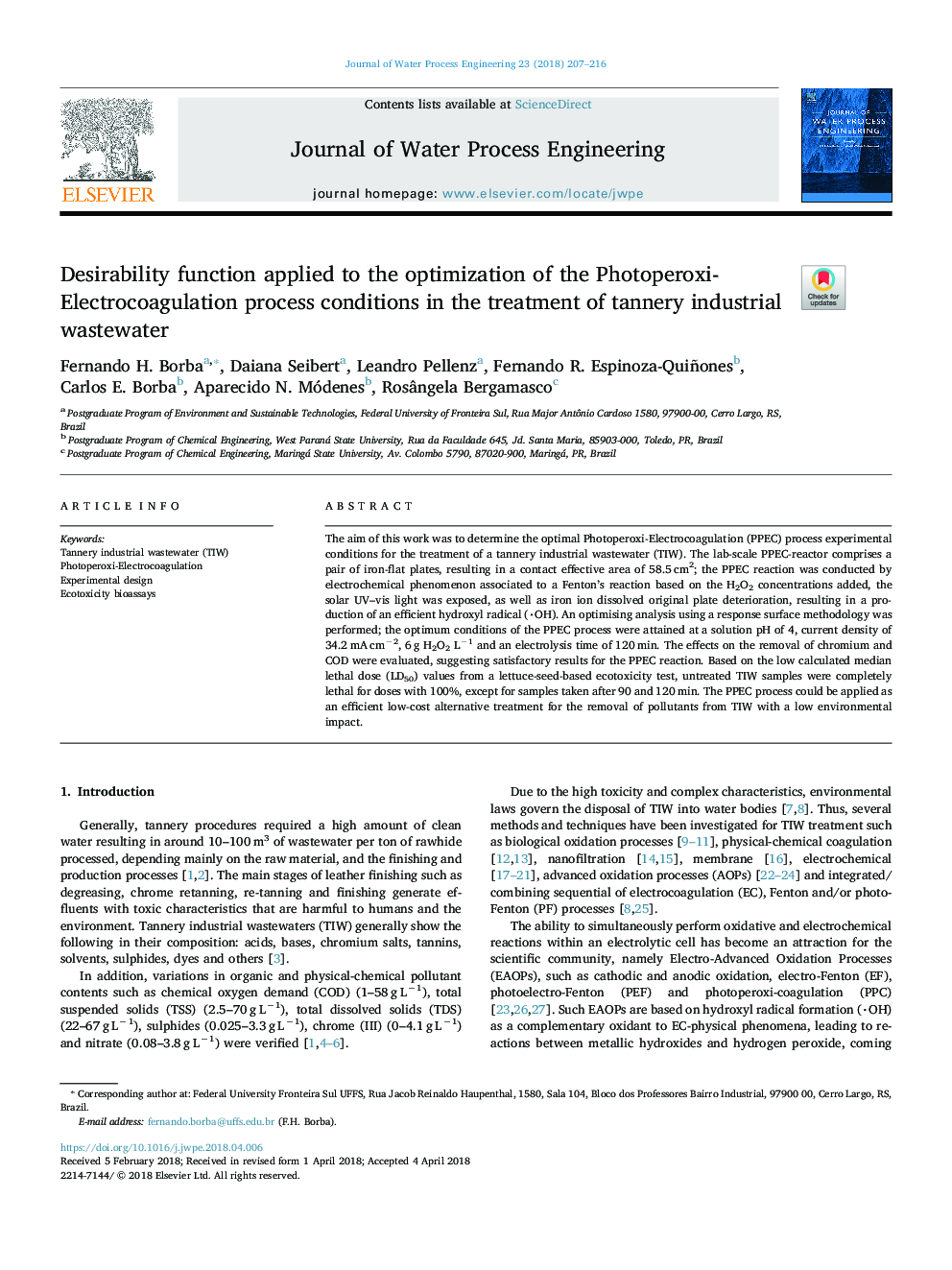| Article ID | Journal | Published Year | Pages | File Type |
|---|---|---|---|---|
| 6671907 | Journal of Water Process Engineering | 2018 | 10 Pages |
Abstract
The aim of this work was to determine the optimal Photoperoxi-Electrocoagulation (PPEC) process experimental conditions for the treatment of a tannery industrial wastewater (TIW). The lab-scale PPEC-reactor comprises a pair of iron-flat plates, resulting in a contact effective area of 58.5â¯cm2; the PPEC reaction was conducted by electrochemical phenomenon associated to a Fenton's reaction based on the H2O2 concentrations added, the solar UV-vis light was exposed, as well as iron ion dissolved original plate deterioration, resulting in a production of an efficient hydroxyl radical (OH). An optimising analysis using a response surface methodology was performed; the optimum conditions of the PPEC process were attained at a solution pH of 4, current density of 34.2â¯mAâ¯cmâ2, 6â¯g H2O2 Lâ1 and an electrolysis time of 120â¯min. The effects on the removal of chromium and COD were evaluated, suggesting satisfactory results for the PPEC reaction. Based on the low calculated median lethal dose (LD50) values from a lettuce-seed-based ecotoxicity test, untreated TIW samples were completely lethal for doses with 100%, except for samples taken after 90 and 120â¯min. The PPEC process could be applied as an efficient low-cost alternative treatment for the removal of pollutants from TIW with a low environmental impact.
Keywords
Related Topics
Physical Sciences and Engineering
Chemical Engineering
Chemical Engineering (General)
Authors
Fernando H. Borba, Daiana Seibert, Leandro Pellenz, Fernando R. Espinoza-Quiñones, Carlos E. Borba, Aparecido N. Módenes, Rosângela Bergamasco,
